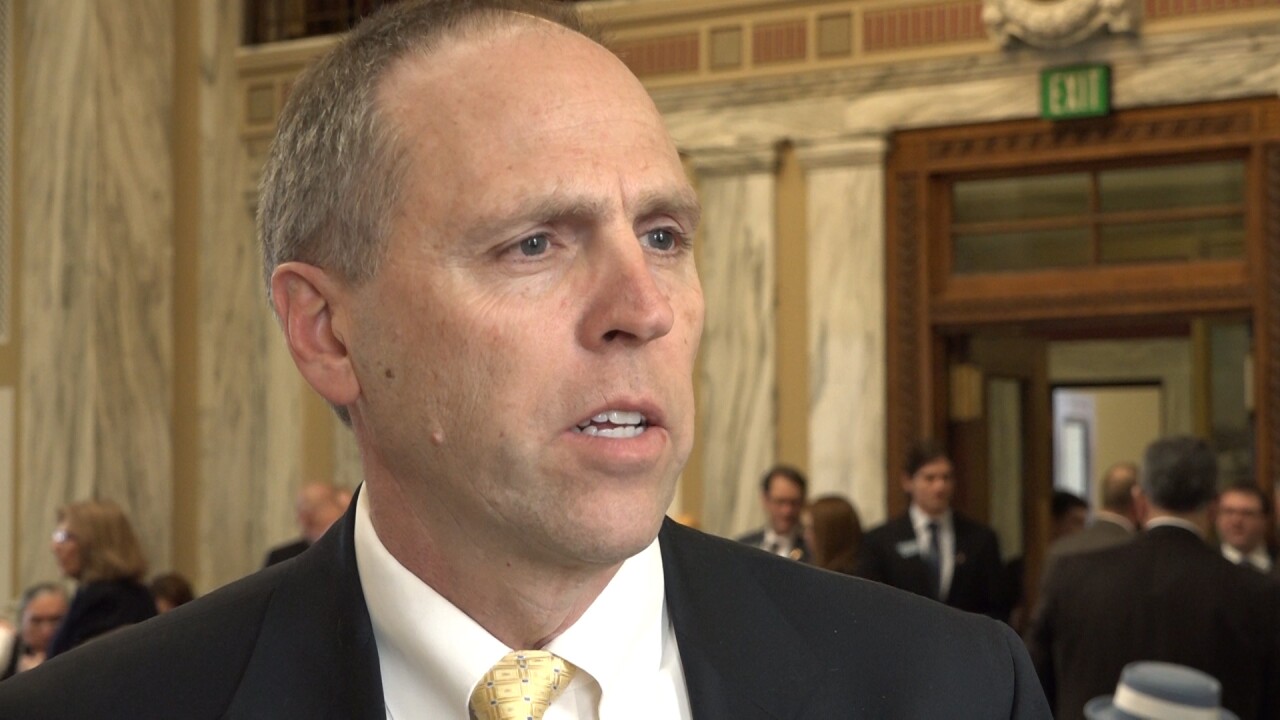HELENA — The centerpiece of Republican Gov. Greg Gianforte’s tax-cut plans – a series of current and future cuts in the state income tax – had strong support from the business community as its first hearing Thursday.
And the administration itself made it clear that businesses are the main target of the reductions, arguing that lower state income taxes will encourage companies to relocate and expand in Montana.
“By proposing this bill and the others being heard here today, Gov. Gianforte is sending a message to entrepreneurs and business leaders in Montana and across the country: We want you and your good-paying jobs,” said the governor’s Budget Director Kurt Alme.
Alme and a litany of business lobbyists lined up Thursday before the Senate Taxation Committee in support of three bills:
- Senate Bill 159, which cuts the state’s top marginal income-tax rate from 6.9% to 6.75%.
- SB182, which would set up a special reserve fund, fueled by excess state-tax revenue, that could be used under specific triggers to further reduce the top marginal income-tax rate.
- SB184, which would exempt entirely from state income tax any profits from the sale of employee-owned stock in a company that opened in Montana and has been here for at least five years.
Opponents of the bills said they’re little more than another tax cut that benefit the wealthy and top income-earners – a practice that has shown virtually no benefits for the larger economy or populace.
Mark Anderlik of Missoula said a recent study by economists at the London School of Economics confirmed this reality.

“These economists … looked back over a span of 50 years at tax cuts for the rich to see if the `common-sense idea’ of tax cuts for the rich turbo-charged the economy,” he said. “All they found was that the rich get richer and the broader economy does not improve. … Reject this flat-earth theory.”
Opponents also noted that the first income-tax-cut bill will cost the state $30 million a year once fully in place, and said lost revenue means fewer services for the public benefit, such as education and infrastructure.
Yet supporters insisted that businesses look at a state’s tax structure when deciding where to locate or expand, and that Montana’s top income-tax rate – paid on all taxable income above $18,700 – makes it stand out.
Sen. Greg Hertz, R-Polson, the sponsor of the first two bills, also had an answer for opponents who said the bills offered next to nothing for low- or moderate-income Montanans.

“But what’s the best thing we can do for those individuals in need?” he said. “Provide them a better opportunity and a better-paying job. And that’s the basics behind these bills and other bills that we’re trying to do.”
With Republicans in firm control of the Legislature and its leaders saying they’re backing Gianforte’s plans, there seems little doubt that the tax measures will pass.
Hertz said he also plans to introduce another bill that will simplify Montana’s state income taxes, by getting rid of some tax credits.
And, on Friday, he’ll be presenting SB181, which increases incomes taxes on some multistate corporations that do business in Montana. The increased revenue from this bill is meant to offset some of the reductions in the tax-cut bills.
Hertz and others also said the Gianforte administration is taking a cautious approach on cutting taxes. He said they’re proposing a minimal change in the top income-tax rate now and advancing other proposals that would reduce taxes only if the state economy responds and improves, creating additional revenue.

For example, SB182, the tax-cut reserve fund bill, would set up a fund that can be tapped to finance further cuts only if several detailed “triggers” are hit. Those triggers include revenue growth that exceeds the rate state population growth and inflation.
Budget Director Alme said the longer-term goal is to get Montana’s top state income-tax rate down to 5 percent.
Heather O’Loughlin of the Montana Budget and Policy Center, a research group that studies the impact of policies on lower-income people, said the bill still has no consideration for how much revenue the state may need, to pay for vital services.




